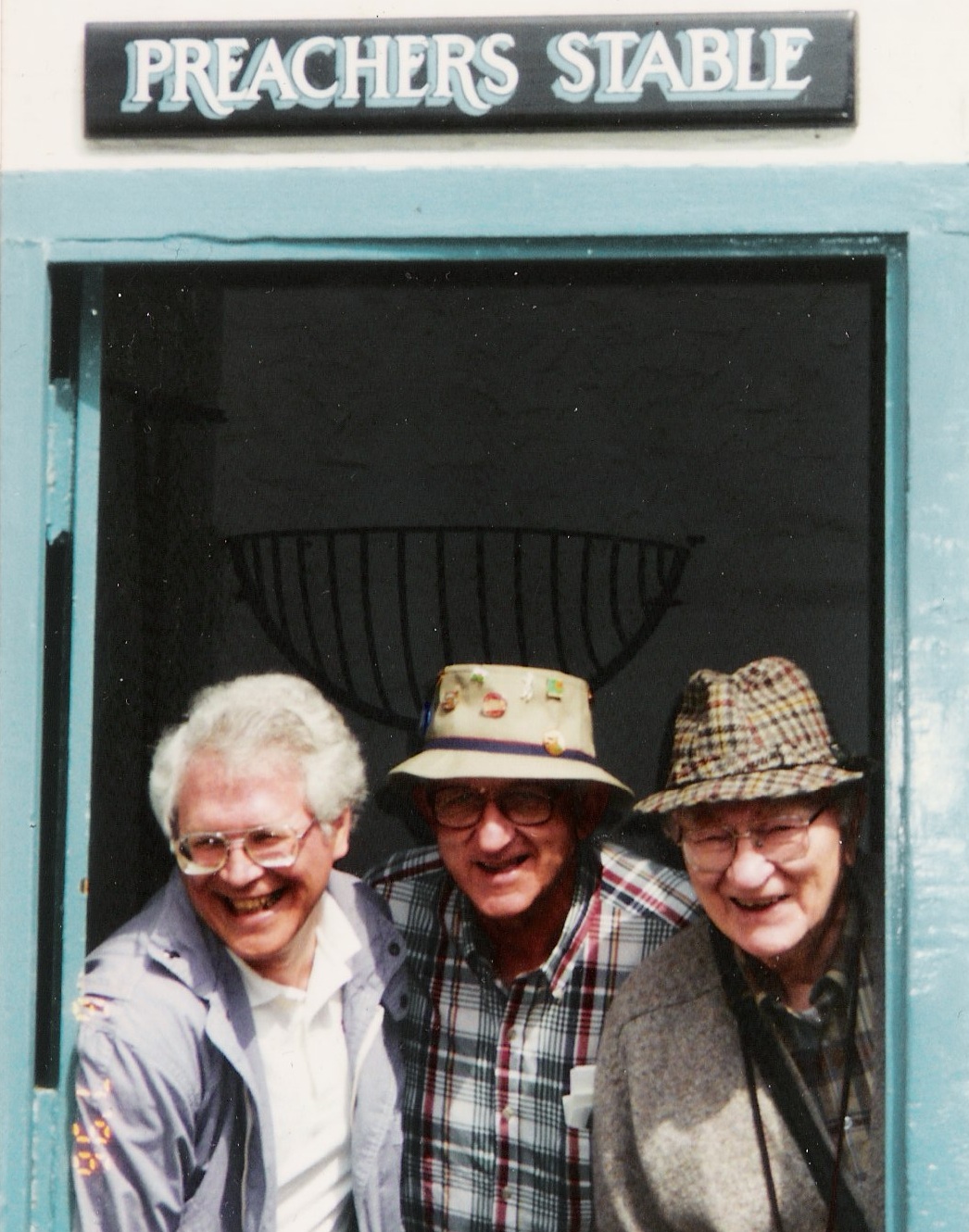
As some readers of The Search for Piety and Obedience will know, I have been working on a biography of the late Brethren in Christ theologian and historian Luke L. Keefer, Jr. (The biography will be published in the near future by the Brethren in Christ Historical Society.) In the past, I’ve shared snippets from my research and writing — here, here, and here.
In the course of my work, I’ve uncovered moments in Luke’s life and ministry that run the emotional gamut — from “dark nights of the soul” to lighthearted occurrences. Today’s Photo Friday recalls the latter of the two categories.
Throughout his ministry as a college and seminary professor, Keefer led a number of study tours, most of them to his beloved England. As the homeland of John Wesley — the subject of Keefer’s doctoral dissertation and many of his published academic papers — England had a special place in Keefer’s heart… and mind.
To judge solely by his published works and professional endeavors, no topic interested Luke more than seventeenth century minister and theologian John Wesley. Out of his numerous articles in scholarly journals and church periodicals, fifteen focus on Wesley’s life or theology, including the doctrine of “perfect love” (also known as second-work sanctification). Such expertise also enabled Keefer to lead stimulating tours of Wesley sites in the U.K.
On one particularly enjoyable study tour in the early 1990s, Keefer was accompanied by several other Brethren in Christ churchmen-scholars, including Al Long, a long-time Bible professor at Messiah College, and Arthur Climenhaga, a former church administrator, bishop, and educator.
One day, the tour stopped near Bristol, England, at a church where Wesley had once preached. As Long recalls:
In the back of that church was a horse stable. . . . Luke and Arthur Climenhaga [a retired Ashland Seminary professor and a Brethren in Christ church leader] and I got in this horse stable and stood behind the door while the rest of the busload of people on the tour took pictures. So I told Arthur and Luke, I said, “You know, I’ve got a caption for this picture.” And they said, “What?” I said, “It’s going to be called ‘The Three Asses.’” It just cracked them up. . . . I never saw Luke laugh so hard in my life.
Of course, such jocularity was not the only takeaway from Keefer’s informative tours. Another trip participant, J-Lynn Conrady, recalls:
We were in Oxford, England, on a tour with Luke. We’re walking down a street [and] . . . I looked at a statue on a corner, and said, “Luke, what’s this statue?” We stopped in the middle of the street, and we got a twenty-minute discourse on this statue! . . . Without even pausing, Luke Keefer knew exactly what it was, could date it and [explain its significance in British church history]. He just blew me away. An incredible mind.
Clearly, Luke’s trips provided both times of intellectual stimulation and recreation for those in attendance.
